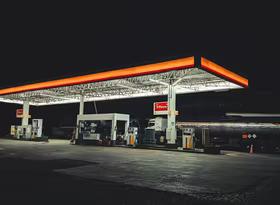
The future looks bright for commercial solar
The number of reported solar farm projects announced across New Zealand had a meteoric rise in the first half of 2022, but how many will see the light of day? Consecutive plans for New Zealand’s largest solar farm have been announced since May 2021, with the follow-through yet to come.
The largest solar farm in New Zealand
As of June 2022, the largest operating grid-connected solar farm in New Zealand is in Kapuni, Taranaki, which was built, and is operated, by Todd Energy. The Kapuni farm is made up of 5,800 panels and was officially opened in June 2021.
Our tracking and analysis show that commercial solar farms plan to grow considerably in number and scale, with plans for 13 farms larger than Kapuni reported in the last 12 months. The most likely successor to the title of ‘largest’ is Pukenui solar farm in Northland. Prime Minister Jacinda Ardern turned the first sod on the site of this project earlier in 2022, and once the 32,000-panel farm is connected to the grid later this year, its reign will begin.
Its time at the top of the leader board may be short-lived, with Lodestone Energy reportedly planning to install a whopping 470,000 panels across five farms in Northland and Bay of Plenty. The plans were first announced in May 2021, and after successfully raising $300m in capital, Lodestone will likely begin installation on its first farm (oddly called Lodestone Two) an 80,000-panel farm in Northland.
Once it became clear the title for largest solar farm was up for grabs, other contenders began to throw their hat in the ring.
- First, in December 2021, Christchurch Airport announced plans for Kōwhai Park, a farm “50 times larger” than New Zealand’s current largest solar farm. At 50 times the size of Kapuni, the number of panels to be installed is around 290,000.
- Then in February 2022, Kōwhai Park’s claim was usurped by Harmony Energy, who announced plans for a farm in Te Aroha comprising 329,000 panels.
- In April, Todd Energy entered the fray with plans for a 750,000-panel farm in Taupō.
Despite all the talk, the largest farm still sits in rural South Taranaki, and comprises a mere 5,800 panels.
Planned pipeline goes through the roof
Our tracking suggests that plans to install over 1.2m solar panels were reported in the first half of 2022, with the cumulative count of actual and planned panel installations up 136%. Growth in planned installations significantly outpaced any installations of real panels as the cumulative count of actual panels installed, those at Kapuni and Pukenui, only made up 1.9% of the total pipeline.
Investors see solar as a sunrise industry
At a time when the total solar pipeline sits at over 2m panels, but only 37,800 panels are actually in place, it is hard to be confident that all these projects will bear fruit.
For our recent update to the Infrastructure Pipeline Profile, we considered electricity generation projects and tried to assess their likelihood of proceeding. Commercial solar farms are a relatively new phenomenon in New Zealand, so evaluating projects proved challenging.
Many of the organisations who announced plans to build huge farms have a few factors in their favour. For example, Lodestone Energy have secured strong support from some of New Zealand’s top entrepreneurs. Christchurch Airport's Kōwhai Park has support from the Minister for Energy and the Minister for Climate, along with the backing of an Australian solar energy investment fund. Of those venturing into the sunshine industry, Todd Energy are perhaps the most established in the energy sector – and they own and operate New Zealand’s largest solar farm.
Solar generation projects have attracted investors like a moth to a flame, as investors look for big returns by getting into the industry early. Though the sector is relatively new, investors are comfortable with the risk as most of the companies involved are not start-ups, and the technology is not blue skies.
The recent popularity of commercial solar is also a result of significant declines in capital costs, which fell 46% between 2016 and 2020. This improvement in cost efficiencies means investors are confident the industry will grow and expect the sun to set on traditional fossil fuel generation in New Zealand. Investors agree that someone will build the largest solar farm in New Zealand, they just can’t agree on who yet.


















